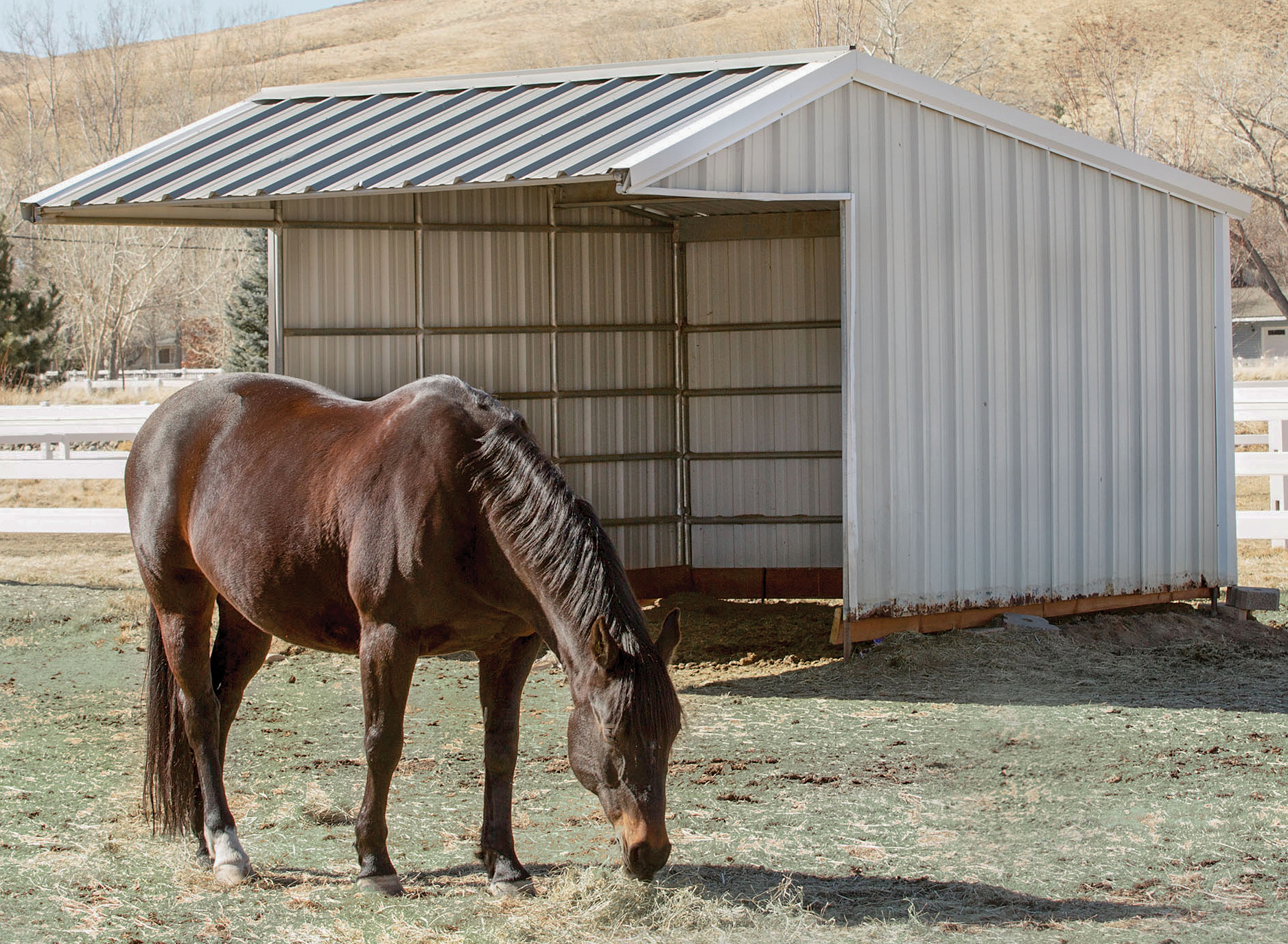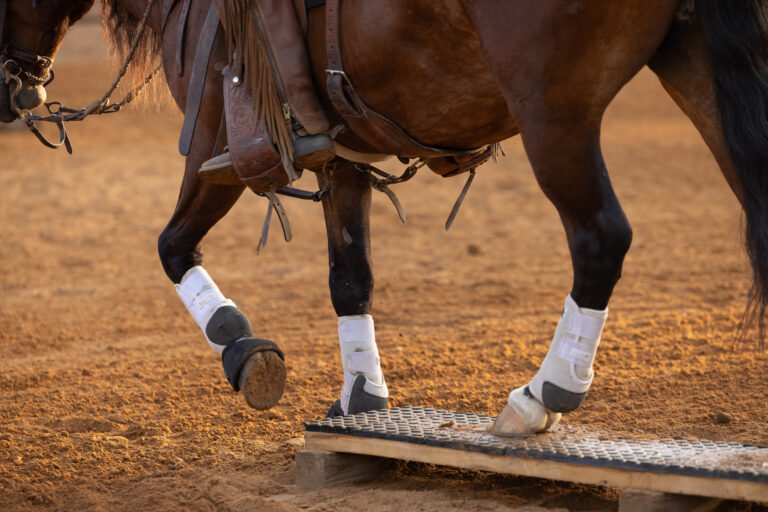
Anett Mindermann
Run-in sheds: a lot to offer
If your horse is lucky enough to spend a lot of time turned out, a simple run-in shed (three sides and a roof) can be an ideal shelter for him—and inexpensive to boot. Horses are well adapted to withstand cold and heat as long as they can escape driving winds and scorching sun. Make sure the shed is large enough—at least 12-by-12-foot per horse (and more if there are pecking-order issues in your herd). Situate it on a slightly elevated spot for good natural drainage on all sides, orienting the opening away from the direction in which the worst storms arrive. Anchor it to the ground so it can’t blow over.
Reasons for Run-Ins

shelter as need: Your horse can decide for himself when he needs to take protection from the elements.
fly protection: The shade of a run-in shed offers respite from flies and other bothersome insects.
[READ MORE: 7 Fly Fighting Solutions]
less cleaning: A run-in requires much less cleaning than a stall or pen where your horse is confined.

An Easy Solution
Acquiring a run-in shed for your horse is one of the easier horsekeeping challenges you’ll face. Your options include:
- Buying a pre-fab shed, such as the wooden one above. Models come in various sizes for one or more horses.
- Building your own. Find plans for a two-horse run-in shed here. Use the plans to construct it yourself or show them to a builder who can further customize the shed to your specifications.






